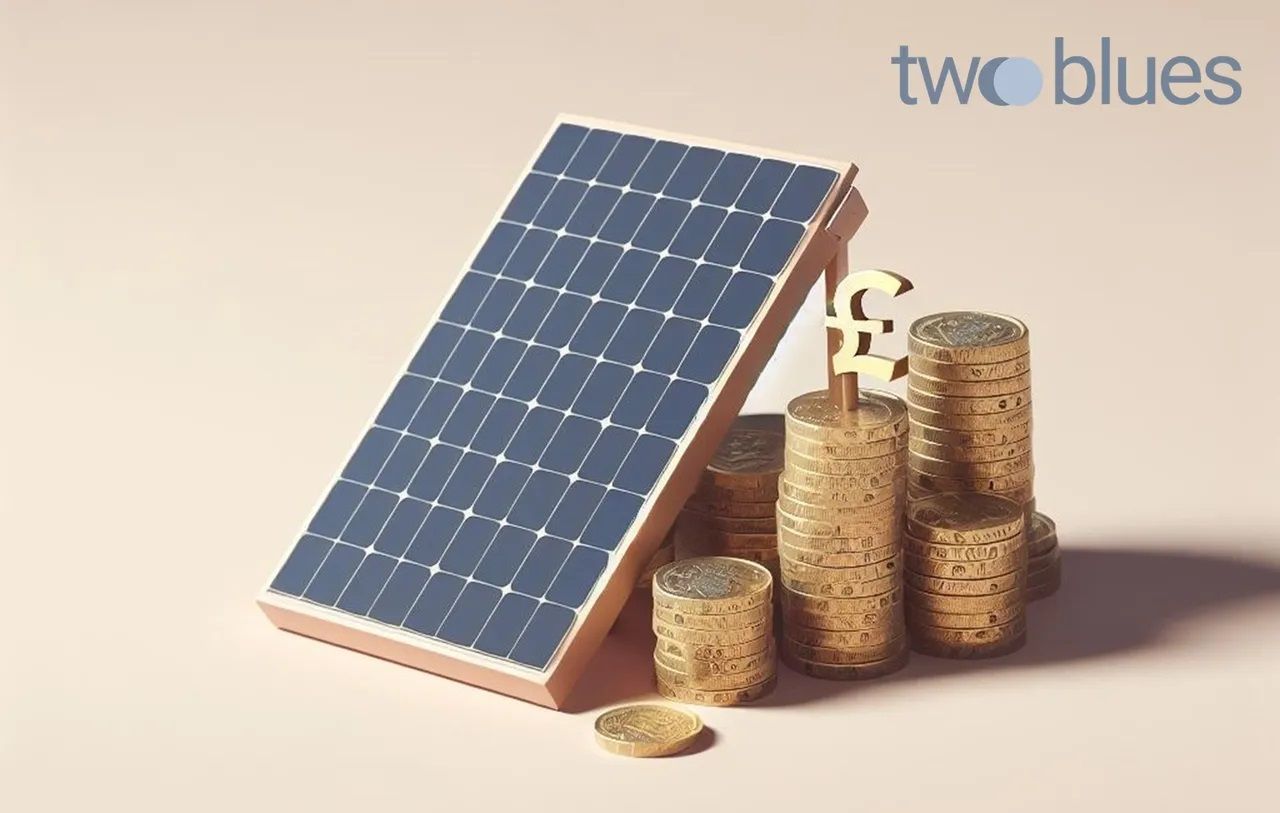Capex-Free Solar: Too Good To Be True?

Two Blues Solar run through the various finance options available for businesses looking to install solar.
Can businesses access the cost and carbon savings associated with solar without any upfront capital? There are lots of funding methods promising this, but how do they work, and is it too good to be true?
We’ll take a look at the funding options available to businesses wishing to install on-site solar, how they differ and who they’re best suited to.
Asset Finance
Offered by many financial institutions, asset finance offers a well-recognised route to funding your solar installation. The leasing company buys the asset for you and then “rents” it to you for an agreed period.
Various options exist - including hire purchase, finance leases and operational leases. They will differ with respect to their monthly payments and ownership options at the end of the asset term. Typical repayment terms are 2-15 years.
If you have a short lease or a small roof and don’t have the available capital for solar, asset finance can be a great option, providing predictable payments and manageable cash flow. However, it’s worth noting that asset finance costs have risen along with interest rates. It’s possible therefore that you may not see immediate financial benefits. You may also be responsible for maintaining and insuring the system, and you’ll need to manage the initial consent and installation processes.
Power Purchase Agreements (PPAs):
A PPA is a model in which a business (tenant, landlord or owner occupier) leases its land or the airspace above its roof to a provider who then installs the panels for free. This PPA provider sells the solar energy back to the business at a price which is typically considerably lower than available market prices.
Typical terms are 15-25 years, however some flexible PPA providers can offer shorter agreements to match lease lengths.
PPAs are best suited to commercial and industrial businesses with a reasonable sized roof (2,000 sqm +) and consumption of c. 400,000+ kWh/year.
Businesses can benefit from day-1 opex savings and a hassle-free process where installation, consents, monitoring and maintenance are all covered by the PPA provider.
It’s worth noting that many PPA contracts will include a minimum consumption requirement, and that some providers offer more flexibility around pricing and contract terms than others.
Community Energy
Community Energy refers to local, community-owned projects intended to reduce, purchase, manage and generate energy. Community groups raise finance for a solar installation (often through crowdfunding) and then sell the energy to the host site through a PPA. The PPA income provides an investment return to those who funded the project.
It’s particularly suited to local community businesses such as schools and village halls. Businesses gain from all the benefits associated with commercial PPAs but may find there’s less flexibility in the PPA offering and a long-term commitment of 25 years is required. Community energy projects are increasingly popular but still exist at a relatively small scale.
Self-Funded
So is it all too good to be true? If there are so many great options available, offering protection from rising energy costs alongside CO2 savings, should you consider the self-funded route at all?
Well, if you have the available capital to roll out solar across your whole portfolio, self-funding your system will almost always generate the highest total savings over the long-term (15 + years).
However, if, like many businesses, you have other priorities for your capital, the financing options above provide great solutions. Solar is currently the cheapest form of electricity and the sooner it’s installed, the sooner you can generate energy and carbon savings.
)
)
)
)
)
)
)
)
)
)
)
)
)
)
)
)
)
)
)
)
)
)
)
)
)
)